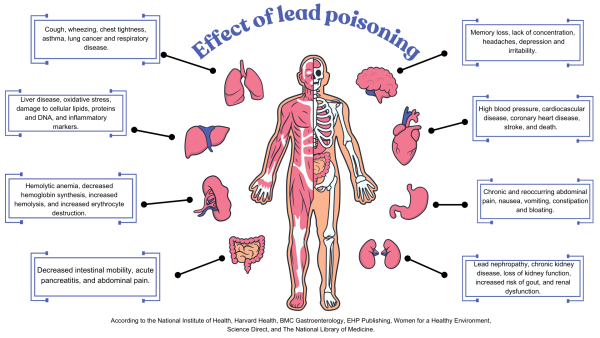As of 2024, Stanley has sold over ten million Quenchers in total according to CNBC. In just a few years, the Stanley cup business went from an annual revenue of seventy-three million dollars in 2019, to four hundred and two million dollars in 2022.
One of the Stanley Quencher lines most popular container is its’ tumbler cups. Stanley cups, or “Stanleys” are a brand of reusable water bottles that have increased in popularity in recent years. They have both a straw and handle and range from a fourteen-ounce bottle to a sixty-four-ounce bottle.
Originally, Stanley was founded by William Stanley Jr., inventor and entrepreneur, in 1913 when he made the first all steel, double-wall vacuum bottle. The bottles first became popular throughout World War II, as they supplied military service members. After that, new products such as mugs, lunch boxes, flasks, and coolers were produced as an “essential for everyone… on the go,” according to Pioneer News and the Stanley 1913 website.
Recently in 2024, controversy has arisen regarding Stanley cups. Online social media users, specifically on TikTok and Instagram, began recording videos of positive at-home lead test results on Stanley cups according to BBC News. Concerns about lead poisoning began spreading across the internet, worrying Stanley users.
The company has confirmed there are traces of lead in the base of the cup, used as a sealing material, which is surrounded by stainless steel in order to help insulate the contents inside.
In a statement that Stanley released after concerns were raised about lead exposure, they said, “All Stanley products are safe… no lead is present on the surface of any Stanley product that comes into contact with the consumer…”
Kimberly Garrett, an environmental toxicologist, says that Stanley’s should not pose a risk of lead poisoning unless the bottom of the cup comes off and exposes the lead pellet beneath. The likelihood of the base coming off during ordinary use is rare according to the Bouvé College of Health Sciences at Northeastern University. If the base cap does come off, the product may be eligible for Stanley’s Lifetime Warranty available on the Stanley 1913 website.
Although lead exposure from Stanley cups is rare, the health risks associated with lead are still a legitimate concern, especially in children according to Nebraska Medicine. Ingesting lead by eating or breathing in contaminated items may lead to lead poisoning.
Children under the age of six are at an elevated risk for lead exposure because their bodies are still rapidly developing and more vulnerable to taking in lead if exposed to it according to the Centers for Disease Control and Prevention (CDC).
Lead-contaminated house dust is one the primary sources of exposed for children in the United States. Buildings built before 1978 may still have paint made with lead. This is likely the cause for the possible dust contamination according to the Agency for Toxic Substances and Disease Registry (ATSDR). Older buildings may also have pipes, faucets and solder that contain lead. Leaching from these things can cause lead exposer through water according to the ATSDR.
Even tiny amounts of lead can have adverse effects over time. One of the largest risks is brain development, which can lead to irreversible damage. Elevated levels of lead can damage kidneys and the nervous system of both adults and children. Extremely prominent levels of lead may cause seizures, unconsciousness and death according to Mayo Clinic.
There are many things’ people can do to ensure a minimal amount of lead exposure. Washing hands, toys, and cleaning dusty surfaces with a damp cloth will help to reduce hand-to-mouth transfer of contaminated dust or soil. Removing shoes before entering a house can prevent lead-based soil from getting inside. By running cold water about minute before using will decrease the chance of exposure from older pipes according to Mayo Clinic.
Although Stanley cups may not pose a substantial risk for lead exposure, keeping your home well maintained by testing walls for lead based paint and checking regularly for peeling paint will help reduce the risk of lead contamination according to Loyola University Chicago.


